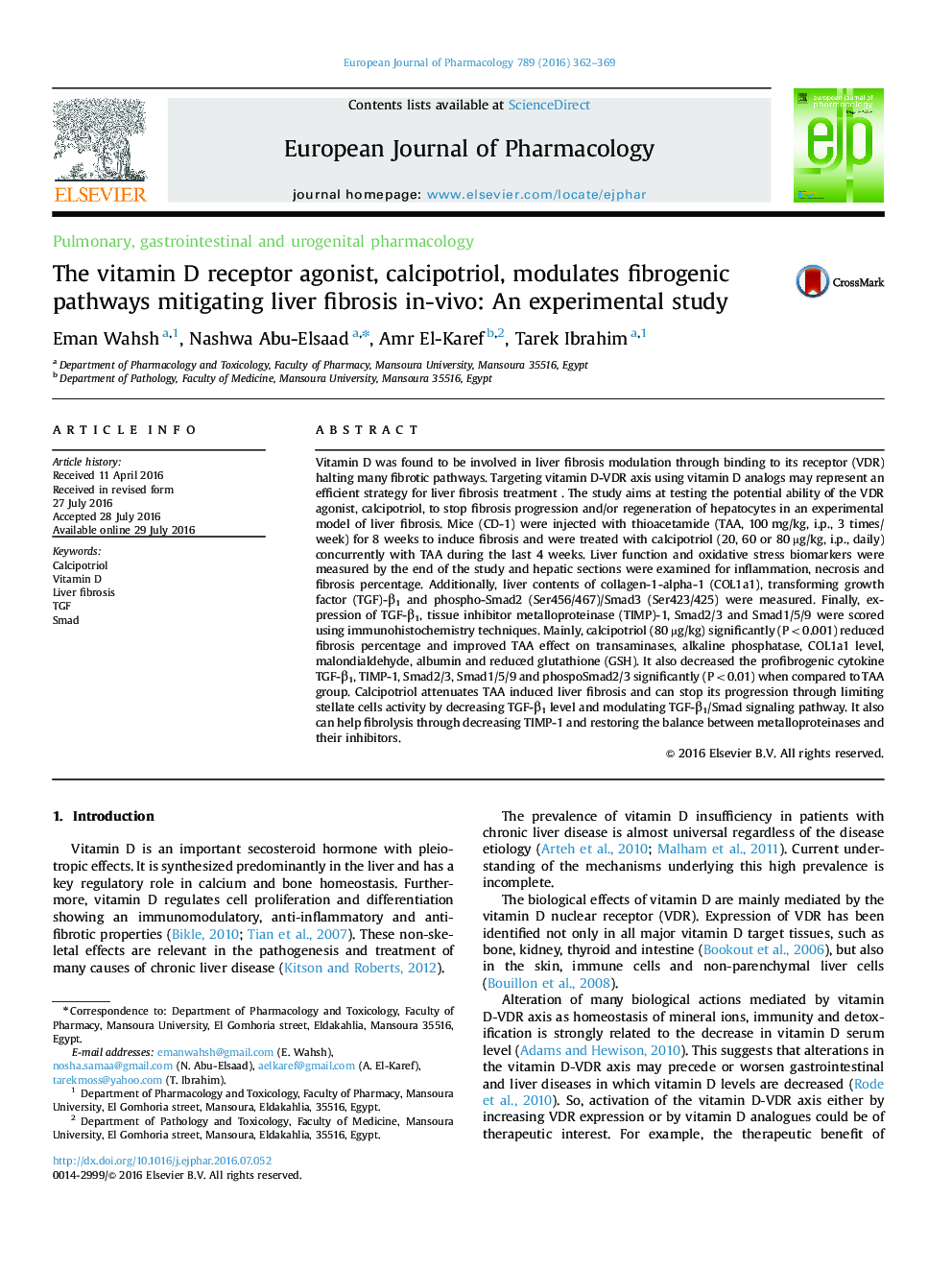| کد مقاله | کد نشریه | سال انتشار | مقاله انگلیسی | نسخه تمام متن |
|---|---|---|---|---|
| 2530849 | 1558891 | 2016 | 8 صفحه PDF | دانلود رایگان |

Vitamin D was found to be involved in liver fibrosis modulation through binding to its receptor (VDR) halting many fibrotic pathways. Targeting vitamin D-VDR axis using vitamin D analogs may represent an efficient strategy for liver fibrosis treatment . The study aims at testing the potential ability of the VDR agonist, calcipotriol, to stop fibrosis progression and/or regeneration of hepatocytes in an experimental model of liver fibrosis. Mice (CD-1) were injected with thioacetamide (TAA, 100 mg/kg, i.p., 3 times/week) for 8 weeks to induce fibrosis and were treated with calcipotriol (20, 60 or 80 µg/kg, i.p., daily) concurrently with TAA during the last 4 weeks. Liver function and oxidative stress biomarkers were measured by the end of the study and hepatic sections were examined for inflammation, necrosis and fibrosis percentage. Additionally, liver contents of collagen-1-alpha-1 (COL1a1), transforming growth factor (TGF)-β1 and phospho-Smad2 (Ser456/467)/Smad3 (Ser423/425) were measured. Finally, expression of TGF-β1, tissue inhibitor metalloproteinase (TIMP)-1, Smad2/3 and Smad1/5/9 were scored using immunohistochemistry techniques. Mainly, calcipotriol (80 µg/kg) significantly (P<0.001) reduced fibrosis percentage and improved TAA effect on transaminases, alkaline phosphatase, COL1a1 level, malondialdehyde, albumin and reduced glutathione (GSH). It also decreased the profibrogenic cytokine TGF-β1, TIMP-1, Smad2/3, Smad1/5/9 and phospoSmad2/3 significantly (P<0.01) when compared to TAA group. Calcipotriol attenuates TAA induced liver fibrosis and can stop its progression through limiting stellate cells activity by decreasing TGF-β1 level and modulating TGF-β1/Smad signaling pathway. It also can help fibrolysis through decreasing TIMP-1 and restoring the balance between metalloproteinases and their inhibitors.
Journal: European Journal of Pharmacology - Volume 789, 15 October 2016, Pages 362–369